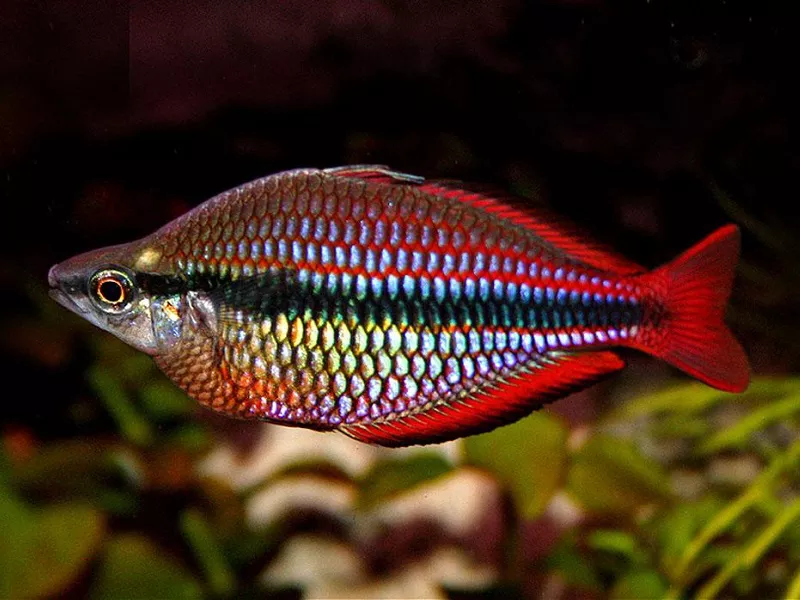Angelfish, with their graceful appearance and vibrant colors, are a popular choice among aquarium enthusiasts. However, one question that often arises is whether angelfish have a tendency to eat other fish. In this comprehensive article, we will delve deeper into the dietary habits of angelfish, shedding light on their feeding preferences, examining their compatibility with other fish species, and exploring strategies for maintaining a harmonious community tank.
Understanding Angelfish:
Angelfish (Pterophyllum) are freshwater cichlids native to the Amazon River basin in South America. They are known for their distinctive triangular shape, elongated fins, and striking color patterns, which can vary from silver to black, with shades of orange, yellow, or red. In their natural habitat, angelfish are accustomed to a diverse diet consisting of both plant matter and small aquatic organisms.
Angelfish Diet in the Wild:
In the wild, angelfish are classified as omnivores, meaning they consume a combination of both plant matter and animal protein. Their diet consists of various items, including insects, small crustaceans, worms, algae, and plant matter such as aquatic vegetation and seeds. This varied diet ensures that they receive the necessary nutrients for their overall health and well-being.
Angelfish in the Aquarium:
When angelfish are kept in an aquarium, their dietary needs can be met through a well-balanced diet consisting of commercial fish food. High-quality pellets or flakes formulated specifically for omnivorous cichlids are suitable options for angelfish. These foods are designed to provide essential vitamins, minerals, and proteins to support their growth, immune system, and vibrant coloration.
While angelfish can thrive on a diet solely composed of commercial fish food, it is important to consider their natural preferences for a diverse diet. Supplementing their diet with live or frozen foods, such as brine shrimp, bloodworms, or daphnia, adds variety and enriches their nutritional intake. Additionally, including occasional vegetable matter, such as blanched spinach or spirulina-based foods, provides essential fiber and micronutrients.
Feeding Behavior and Tank Mate Compatibility:
Angelfish are generally peaceful and can coexist with a variety of fish species in a community tank. However, their compatibility depends on factors such as tank size, temperament, and the size of the other fish species. It is crucial to consider the potential size difference between angelfish and other tank mates, as well as the angelfish’s predatory instincts.
While angelfish are not inherently aggressive or predatory, their behavior may change if they feel threatened or territorial. They can display territorial aggression during breeding periods or if they perceive smaller fish as potential threats to their space or offspring. In some cases, this territorial behavior can lead to angelfish exhibiting predatory tendencies, especially if the other fish species are small enough to fit into their mouths.
To minimize the risk of angelfish displaying predatory behavior, it is advisable to provide them with a well-fed environment. Offering a diverse diet that closely mimics their natural feeding habits helps satisfy their nutritional needs and reduces the likelihood of them seeking out smaller tank mates as a food source.
Creating a well-structured aquarium with ample hiding places, plants, and structure helps provide a sense of security for both angelfish and their tank mates. This reduces stress and minimizes the chances of aggressive or predatory behavior. Providing appropriate tank mates that are of similar size or have similar aggression levels can also contribute to a more harmonious community tank.
Conclusion:
Understanding the dietary habits and behavior of angelfish is crucial for maintaining a harmonious community tank. While angelfish are generally peaceful, their predatory instincts can occasionally manifest if they feel threatened or if smaller fish can fit into their mouths. By providing a balanced and varied diet, ensuring appropriate tank mate selection, and creating a well-structured environment, aquarists can help minimize the risk of angelfish displaying predatory behavior.
Responsible and informed care allows these magnificent fish to thrive in the aquarium while fostering a safe and enjoyable habitat for all inhabitants. By considering the natural diet and behavior of angelfish, aquarium enthusiasts can create a vibrant and diverse community tank that showcases the beauty of these remarkable fish while ensuring the well-being of all aquatic residents.
Recommended reading:


























